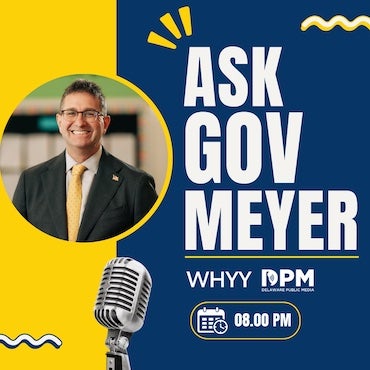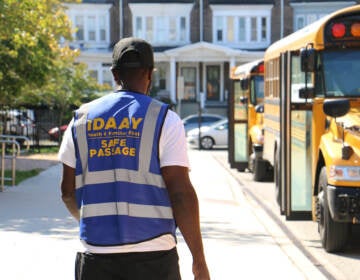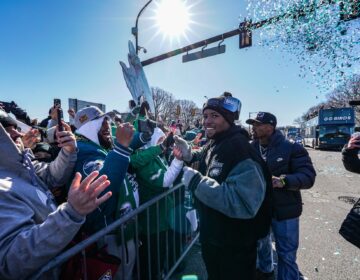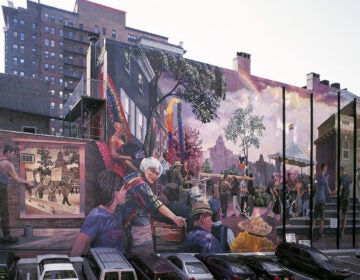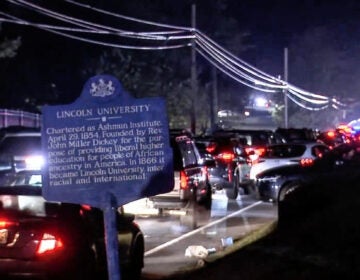Child shootings doubled in Philly during the pandemic. Black children bore the brunt
A national study found that gun assaults in four cities doubled across all racial groups during the pandemic, but spiked more severely for Black children.
Listen 1:17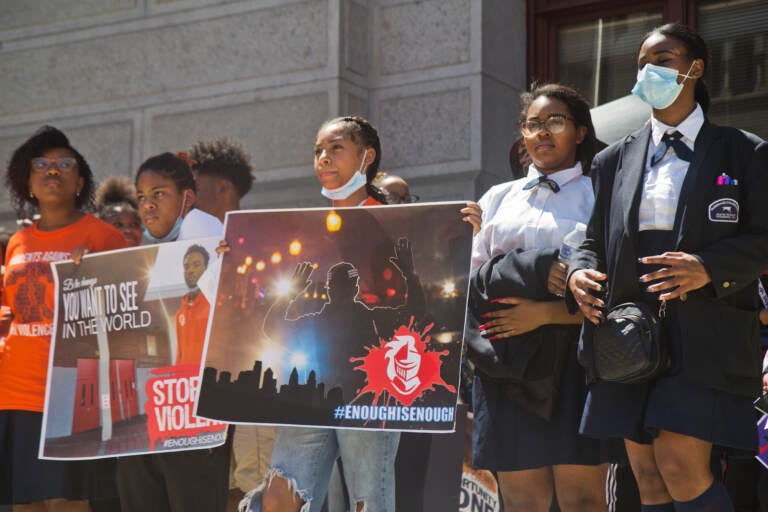
Students from district and charter schools in the 22nd police district in Philadelphia rallied against gun violence outside City Hall on May 31, 2022. (Kimberly Paynter/WHYY)
Black children are 100 times more likely than white children to be victims of gun assault, according to a study this month in the Journal of the American Medical Association.
The disparity between Black and white children victimized by shootings widened during the COVID-19 pandemic, defined in the study as between March 2020 and December 2021. During that period, 34 out of 100,000 Black children had suffered a fatal or non-fatal gun assault annually, compared to 0.34 of 100,000 white children.
Shootings of children — both fatal and nonfatal — doubled across all racial groups in Philadelphia during the pandemic period studied in the report. These numbers are just for gun assaults, they don’t include accidents or incidents of self-harm.
“We knew that children of color, even before the pandemic, were more likely than non-Hispanic white children to be shot, and we also knew that child gun victimization seemed to be increasing during the pandemic,” said Jonathan Jay, study author and an assistant professor of community health sciences at Boston University. “But no one had looked at how racial disparities in child victimization might have been changing.”
Prior studies have shown that Black children were more likely than white children to be exposed to gun violence in their neighborhoods, and that disparity also increased during the COVID-19 pandemic.
The Boston University study is based on 2,672 shootings that occurred in Philadelphia, Los Angeles, New York, and Chicago.
The bulk of gun assault victims studied were over the age of 14, Jay said.
Philadelphia’s child gun assault rate outpaced the other three major cities studied, and it jumped from about 30 per 100,000 to about 62 per 100,000 during the pandemic. The researchers did not include fatal shooting data for Chicago, so Jay expects that city’s child gun assault rate could actually be much higher.
A policy paper published by the Children’s Hospital of Philadelphia argues that the increase in gun purchases during the pandemic created heightened risk of homicide, suicide, and unintentional gun injury in kids.
Just over one million Americans purchased a gun in January 2020, compared to roughly three million per month in January 2021, according to a National Institutes of Health analysis of the National Firearms Survey.
“With COVID, we’ve seen an increase in gun purchases and more guns in the home,” said Dr. Joel Fein, professor of pediatrics and emergency medicine at the University of Pennsylvania and co-director of CHOP’s Center for Violence Prevention.
“We also had more kids in the home during COVID that they couldn’t go to school. So they were in places where there were now more guns, and probably more guns on the streets as well.”
A 2022 study from the University of Chicago and Harvard Medical School attributed the rise in child gun deaths during the COVID-19 pandemic to “increased psychological strain in families, in combination with school closures, which lead to greater time spent by children at home, where guns are often kept.”
Kaliek Hayes, founder of a Philly gun violence prevention nonprofit called the Childhoods Lost Foundation, said these factors created “a perfect recipe” for kids to engage in dangerous behavior.
“Access creates opportunity, it just happens to be negative opportunity,” he said. “In communities where it’s poverty-driven and they’re missing all the other elements of just being productive, and then we ask why?”
He and other community leaders in neighborhoods where gun violence is prevalent say they’re trying to reach children long before they get involved, and connect them to a network of after-school mentorship programs, athletic and arts opportunities, and career prep offerings.
“If we err on the side of getting in front of it before it happens, a lot of the numbers we’re seeing would be different,” Hayes said.
Childhoods Lost recently produced a stage play featuring young Black men and their experiences with gun violence. Hayes is now working on a show that casts 10-year-old boys as historic figures such as Malcolm X, Frederick Douglass, and Martin Luther King, Jr.
Fein, at CHOP, says he’s seen a “dramatic increase in gunshot wounds” there.
He’s hopeful that the new data will push the city of Philadelphia to keep approaching gun violence as a health issue, tackling root causes including education, poverty, and access to mental and physical care.
“Gun violence is a really complex issue and it offers some other challenges compared to smoking and motor vehicle injuries,” he said. “I think that the city is trying to and should continue to try to foster collaboration and cooperation from all of the sectors that reduce those social issues that drive violence.”
CHOP physicians are already trying to approach the situation preventatively, Fein said, by asking patients about firearms in the home and providing gun locks. They also have a Violence Intervention Program that helps children injured by gun assault and other violent means navigate legal, mental health, medical, education and employment services.
Firearms recently became the leading cause of death for children nationally, according to a University of Michigan analysis of U.S. Centers for Disease Control and Prevention data.

Get daily updates from WHYY News!
WHYY is your source for fact-based, in-depth journalism and information. As a nonprofit organization, we rely on financial support from readers like you. Please give today.

